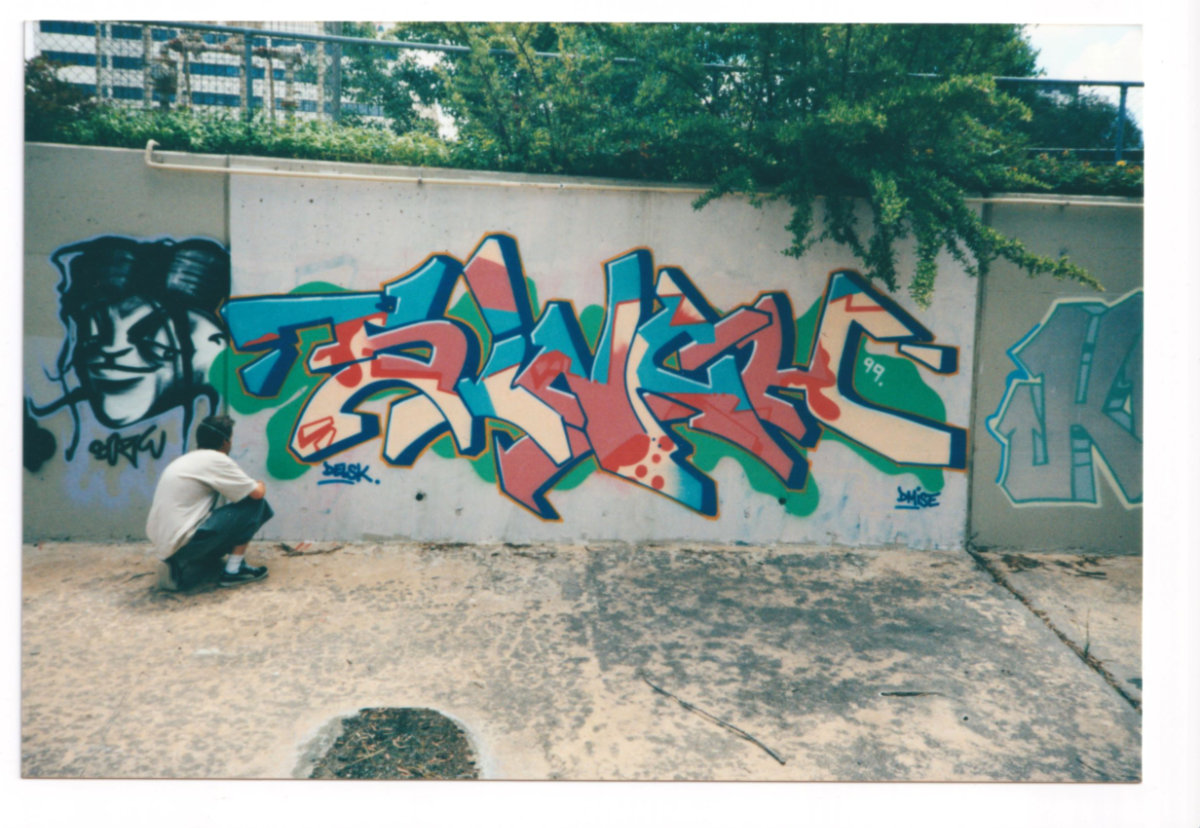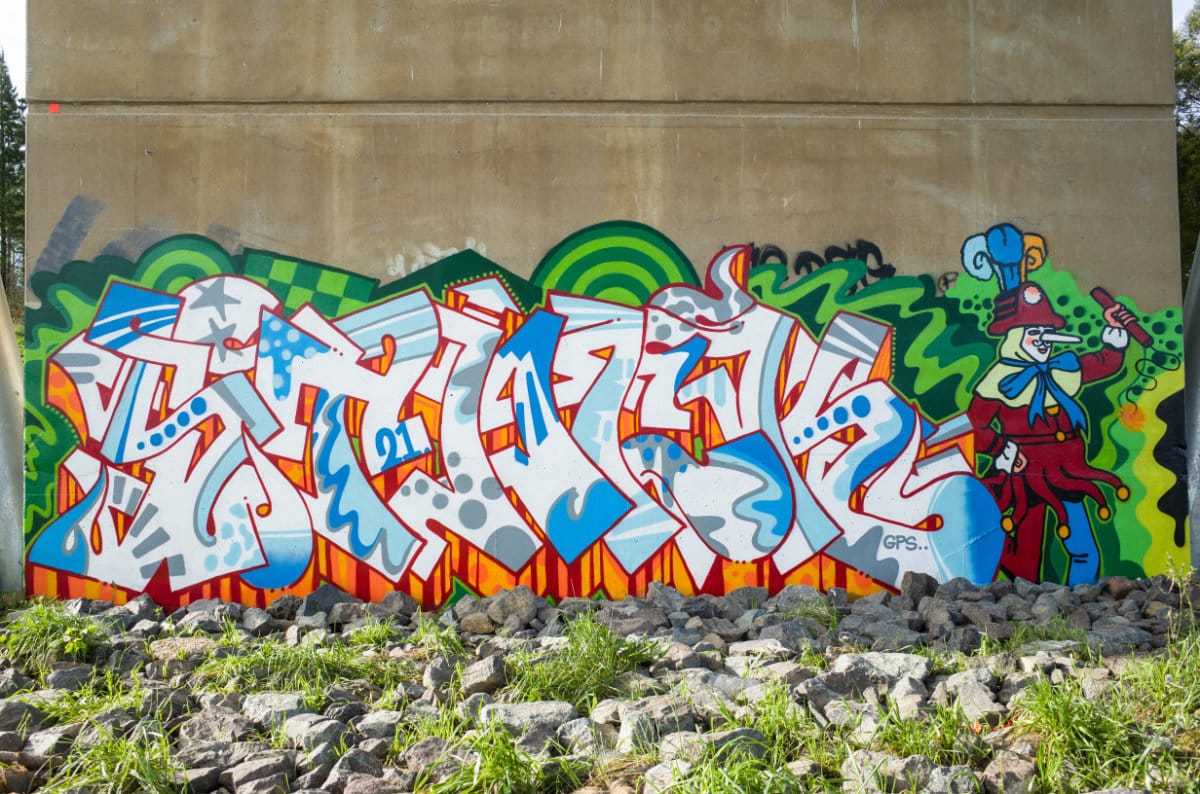STOCK

I started at the end of ’96 around this area…Initially Belco, yeah, because at that time I was too young to drive or go too far from home…I would have been about 14, 15. But at the start it was just my local area, just with a marker, like an Artline marker, and I’d walk around, mainly tagging bus stops, and then… because you catch the bus around, to Civic or sometimes to Woden, you take a marker with you and then see all the bus stops along the way and think ‘oh yeah, there’s some good spots along there…’ all the bus shelters were really good targets….You’d have your school bag and some markers in there… do some silly little scribbles, somewhere.
Well, I guess, the reason I got into graffiti was that I was a skateboarder. Skateboarding and graffiti have a lot of parallels. I guess I was always at Belco skate park, there’s a lot of graffiti down there and it was an easy place to paint at the time… and as a skateboarder you sort of look at the city in a different way, similar to how a graffiti artist does. Like, you’ll look at a sloped wall or a ledge and think ‘oh that would be cool to skate’ you make a memory of places and spots to skate later. You look at parts of the city as spots or targets.

Yeah, so coming from skating and getting into graff, you’d be looking at the city in a similar way. You know, you’d see a wall on top of a building, and go ‘oh, that’d be good to paint’, and you just look at the city in a more creative way, I guess? I just started with markers, because I didn’t know how to get paint, or couldn’t afford it. But then, after time you meet other people and work out how to get paint, whether you can afford it not.
Well back then in Canberra there wasn’t any graffiti specific paint at all, it was all… there was a lot of hardware paint, and automotive paint. Yeah, shoe paint, that was good for tagging. There was a famous shoe paint back then, called Tuxan, which was well known. Yeah, people still reminisce about it today, because it had a really nice smell.
It may (still be around) but I haven’t seen it for quite a while. And the cans are very small, and compared to today’s paint, it would be really watery.
By watery I mean the paint wouldn’t cover well, now the paints are created for graffiti and cover any surface really well, So the formulas are a lot better, the technology’s a lot better.
So people wouldn’t bother with the Tuxan anymore. But back in the day it was some best paint you could get along with touch ups and krylons.

If we go back further, I went to school in Melbourne in 91/92, when I was really young, and I remember seeing all the graff on the trainlines? Tagging can be just as creative as any other form of graffiti. It’s the basic element of graffiti which is the written word in its rawest form. A good tag will have all the elements of good graffiti within it, flow, style, proportion, balance, individuality etc.
So the graff I saw in Melbourne always stuck with me. And the high school I went to a few years later down there, they had Subway Art in the library, so I used to look at that every lunchtime, just geek out in the library looking at that.
Usually I’d practice on paper first. It was always based on letters. It was always about drawing letters. It’s all based on letter structure, balance and proportion. Good graffiti will have the elements of typography in it. It’s got to be strong lettering to make good graffiti. It all comes back to the letterform. People make their own interpretation of letters; some people prefer more traditional, easy to read kind of (public) stuff, other people just bug out and do abstract things or wildstyles. It’s all up to your artistic flair and the style you want to push.
I kind of stick to a traditional style but try to change it and evolve, never doing the same piece twice. (New York Style) is my main inspiration… I kind of stick with the basic NY technique. I like to paint a variety of different spots, different cities, different locations, which gives the piece a different look, you know? Different areas… I like abandoned spots, or run-down areas, train lines, grimy walls and deserted areas. I think graffiti looks natural in the more decaying or industrial parts of the city? Like under bridges, or abandoned places, along train lines. Because graffiti fits in with the atmosphere of those places. It’s also more fun exploring places like that and adding something personal and creative to somewhere which might look drab and ugly.
So when I first started I was only drawing SINCH for a long until I got to a point where I thought, ‘shit, that’s the only word that I can write.’ I was hopeless at any other word. So then I started changing up the letters and coming up with new tags and practicing every letter in different words. And it’s something you have to do as a writer to evolve.

